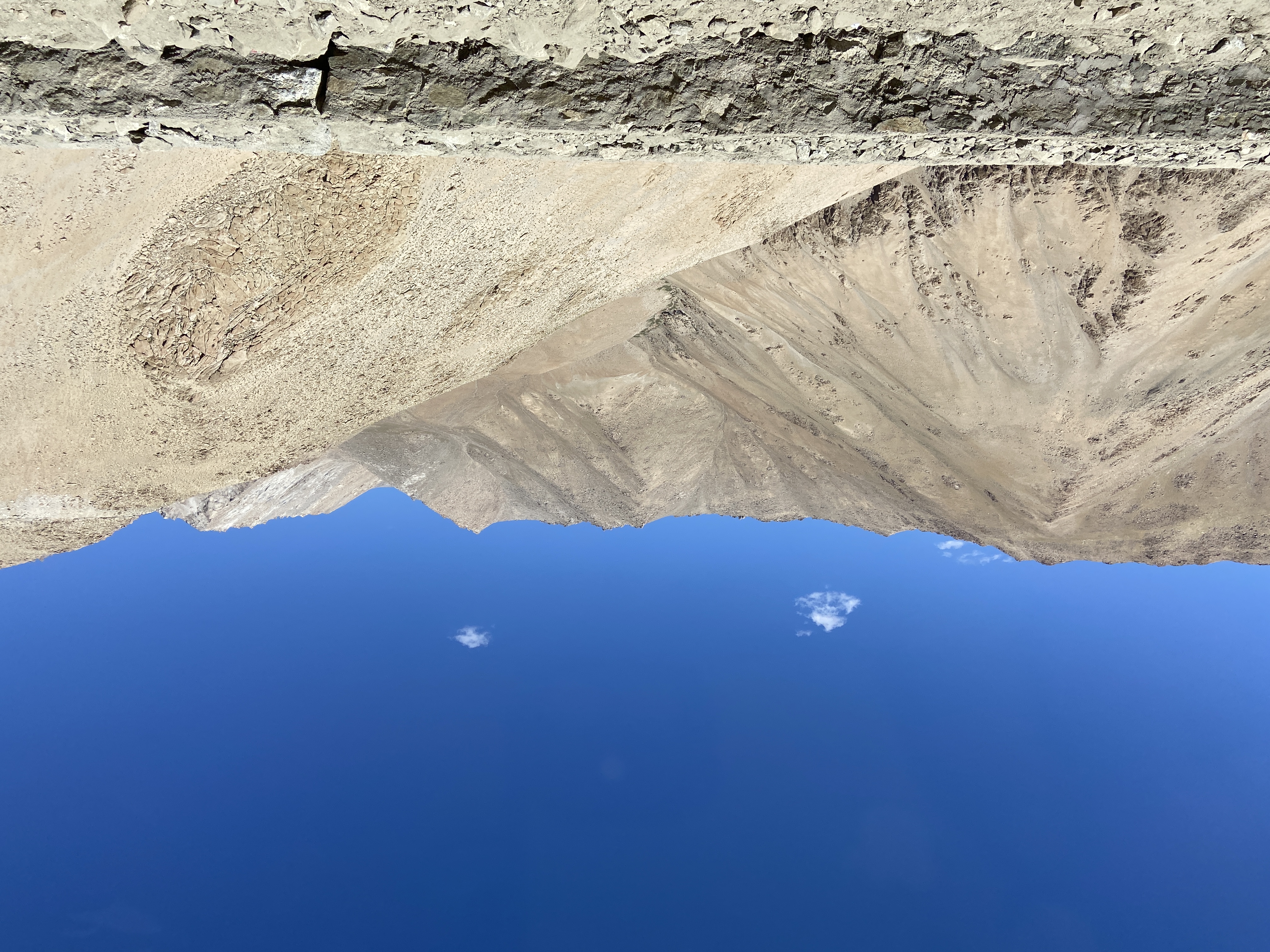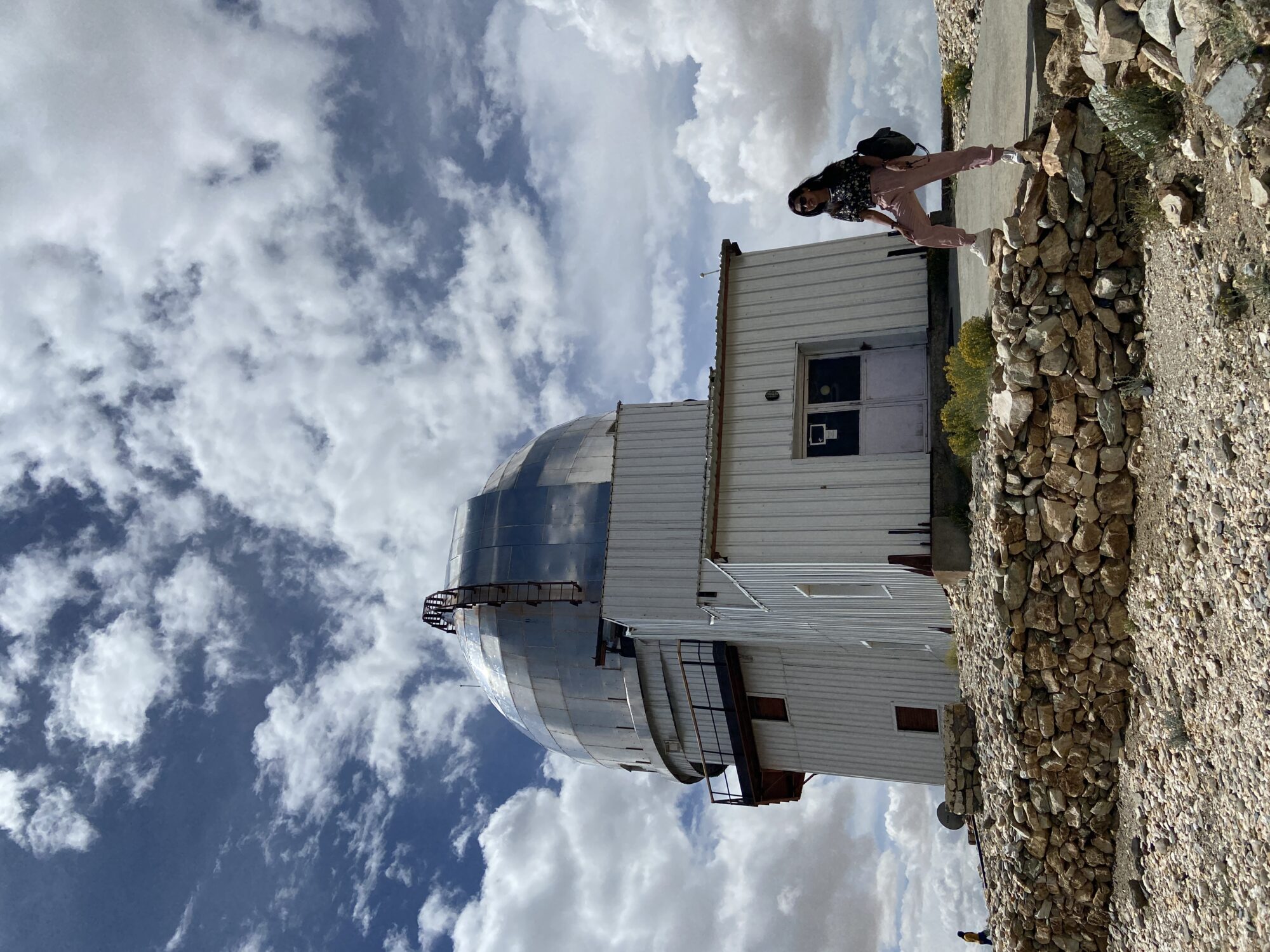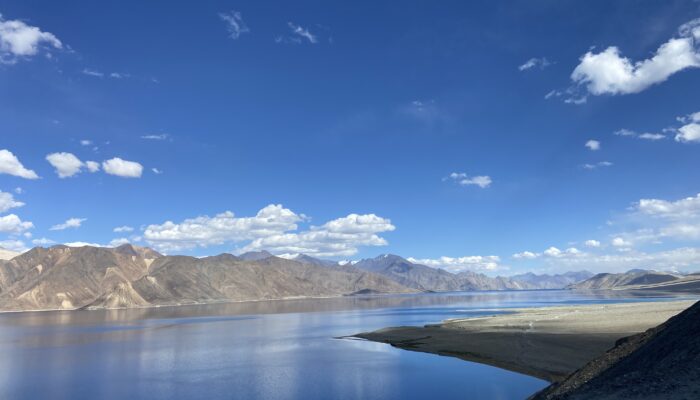It’s been close to 2 years since our trip to Ladakh, but I finally got around to writing about it, after a couple of failed starts. More importantly to share this itinerary that has made it’s way around already through WhatsApp and shared notes. It’s one of our long road trips, but an incredible one. And it was also one of our last travels as a couple, as we soon expanded our family after that! But more on that later. I hadn’t visited Ladakh after the 5 point someone/3 Idiots fame, but planned it a decade later. Roughly how I wanted to. Flew into Leh, after connecting via Delhi. We stayed in Ladakh about 2.5 weeks, but depending what you need, you could do 6 day, 10 day or 2 weeks to see and soak in the mountains here!

View from Khar Dung La
So, firstly this was our itinerary:
Ladakh Itinerary 2021
Day 1 – Reach Leh, acclimatise, explore downtown Leh, market, food
Day 2 – Continue acclimatizing – we didn’t but it is rather recommended, went to Shey
Day 3 – Kargil via Lamayuru – we stayed at Hotel Zojila Residency (Agoda) stopped by the invisible village OTW
Day 4 – Drass, War Memorial back to Leh (night stay). Tried going to Nubra directly, but the distances, road conditions and timings don’t allow this.
Day 5 – Khar Dung la -> Nubra, we stayed at Nubra Eco Lodge
Day 6 – Explored a bit of Nubra, the Hunder side, double back camels, monastery,
Day 7 – Stayed at Lchang Nang for a night again in Sumur side of Nubra, went to the hot spring, not the lake. Skippable. Swappable.
Day 8 – Proceeded to Pangong, stayed at Pangog Heritage Camp 4000
Day 9 – Pangong to Leh
Day 10 – Break, explored places in Leh, the markets and restaurants – there are SO many places to eat!
Day 11 – Long trip to Hanle – stayed at Guest House, picked up vegetables and snacks for them OTW, monastery
Day 12 – Amazing stay in Hanle – dark sanctuary, star gazing, planet spotting, observatory visit.
Day 13 – Tso Mo Riri – the only place we couldn’t do prior reservation, went there and figured.
Day 14 – Explore Tso Mo Riri and head back to Leh
Day 15 – Hemis monastery, Stakna monastery, Shey palace and Stok palace.
Day 16 – Thiksey monastery, museums, temples, traditional meals – Kashmiri, Ladakhi etc.
Day 17 – Depart via Delhi

Tso Moriri
Things to know about traveling to Ladakh
High Passes
The High Passes bit isn’t just a phrase. There are many actual high passes in Ladakh, quite a few open to general public. One of the first we came across was Fotu La (elevation of 4100m), that has a backdrop of the Zanskar Range. I think we crossed this on the way to Kargil. There’s also the Zoji La – where many wars have been fought to capture this very coveted piece of land. It is also known to be very precarious in the winters, making these wars tough to wage and even harder to win. Chang La is another noteworthy pass, 5,391m elevation, on the Ladakh Range, found on the way to Pangong Tso. And of course, the mighty Khardung La, at 5,359m – one of the most popular and highest motorable passes in the world. It is the gateway to the amazing Nubra Vallen and Siachen. All of these passes, and connecting roads are maintained by Border Roads Organisation BRO, and after traveling here, you’d have new found respect for civil engineers and roadmakers. And well, these guys also have a quirky sense of humour, the roadside signages are fun to read! Eg. Go easy on my curves 🙂

Across the Indus River
Oxygen and Acclimatization
You’d hear a lot of people carrying Oxygen cylinders and having trouble breathing, no acclimatization is not overrated. Ladakh has a high altitude mountains and desert, with low atmospheric oxygen. Most of us from plains and plateaus are not accustomed to this altitude or the thinness in breathable air, and need time for our bodies, specially lungs to adjust to this. The official Ladakh website recommends a 48 hour acclimatization for tourists arriving in Leh, more so if you’re flying in, but taking it easy for a day works too. And it’s not like you’ll be bored, Leh is gorgeous, has a bustling market with coffee shops, stores, small restaurants, and more. A little walking is okay, but climbing gets tough. Altitude sickness is real, and medicines like Diamox, Aspirin can help. Take it easy, no point falling sick on a trip.
Local Commute & Communication
You can drive your car or bike into Leh. But for commute in Ladakh, local bikes and cars (LA registration) should be hired. In certain locations, those specific area vehicles are only allowed. Like in border and restricted areas, an Inner Line Permit is needed in certain parts of Ladakh. Inner Line Permit or Restricted Area Permit/ Protected Area Permit is an official travel document that is issued and stamped by the Indian Authorities to allow the tourists to visit the protected areas of Ladakh. It is mandatory to obtain the permit for domestic as well international tourists, specifically to visit areas which are situated near the international borders such as in the proximity of Line of Control (border with Pakistan) and Line of Actual Control (border with China). You can do this online or have your travel agent do it for you.
Most places in Ladakh are many hours drive from Leh, 7-9 hours were our usual commute time to just any of the places like Pangong, Kargil. Factor in some delay due to road construction or blockage or visibility due to weather, and that’s more than half of the day on the road. So plan accordingly. If you plan to visit Tso Moriri or Hanle, there is an additional permit needed, and this is only issued to Indian nationals. Foreign tourists were not issued this prior to Sep 2023, hence were not permitted in these areas. Now foreign nationals can also visit the ChangThang region of Hanle.
Only postpaid sims work in Ladakh, but in remote areas, all network gets patchy. I have a prepaid Airtel connection, which of course didn’t work for calls, but weirdly my 4G was functional! We used Tapash’s Airtel postpaid that did very well throughout the trip!

Nubra Valley & River
Food
Of course I had to research extra about food, because a lot of folks told us it’s hard to find food in Ladakh. True but also not true anymore. Leh has a burgeoning food scene, with lot of farm to table places, chefs doing pop ups and good restaurants serving Japanese, Korean, Pizza and local food. The scene changes dramatically once you’re on the road. As we go into villages and remote areas, the simpler the food becomes. The widespread army bases and large volume of tourists ensure there are basic shops and places to eat, but yes these are basic at best.
In farther corners like Hanle, the guest house owners called Tapash and asked if we could bring some vegetables and supplies, because that’s not easily available in those deserted corners. What we took was the cooked as food and served to the folks staying there, including their families. I remember finding a samosa stall and we picked up that for the home stay as well! The simple pleasures of life. So maggi, basic momos, rice and dal – this is the food for the road.
Power Outages
Ladakh does get power outages from time to time, and that’s something to keep in mind while traveling here. Powerbanks, back up chargers may be necessary. Tent hotels in Pangong for eg. run completely on DG, as the area is completely overrun with tourist establishments. While these luxe tents will have everything from comforter to bathrooms and heater, they usually all switch off power at around 7pm. It’s similar in Nubra, and even Hanle. But there’s a huge upside to this. The high altitude and with minimal light pollution, Ladakh is an ideal destination for stargazing. The clear night skies are unbelievably crisp, as entire constellations open up and put on grand celestial displays for humans to see!
When we were in Hanle, several amateur astronomers had driven down from their cities, with what I thought were quite big sized telescopes to chase stars. It was an amazing experience looking through those telescopes, and actually spotting Saturn’s rings and seeing the terrain of Jupiter. The real luxuries!

Observatory in Hanle, India’s first dark sanctuary
The Last Word
Ladakh was an exhilarating experience for us. I read somewhere that micro planning is not good for fun travels, well for places like Ladakh, where stay places are limited, commute takes time, and weather plays a key role – there is no thing as too much planning! It’s better to be well researched and prepared, and here I am writing this so you fellow traveler can do the same!


TrackBack URL
http://www.sheknowsgrub.com/explore-ladakh/trackback/